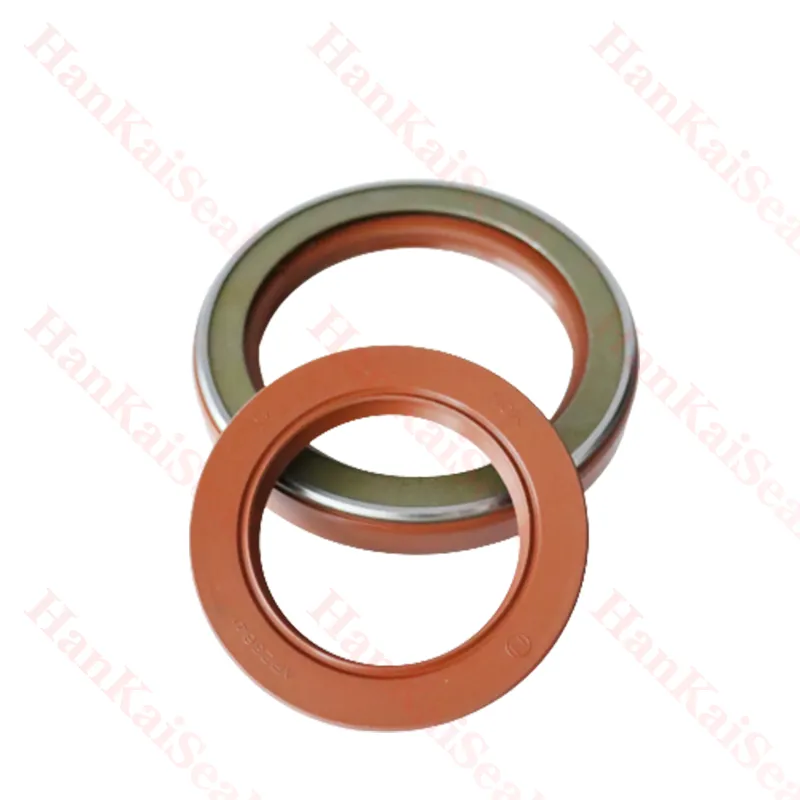Ноя . 15, 2024 04:10 Back to list
high temperature shaft seals
High Temperature Shaft Seals Essential Components for Industrial Applications
In various industrial applications, maintaining the integrity of systems that operate under high temperatures is crucial. One of the often-overlooked components that play a vital role in this aspect is the shaft seal, specifically designed to withstand elevated temperatures. High temperature shaft seals are essential in preventing leaks, protecting equipment, and ensuring optimal performance in machinery. This article will explore the importance, types, material properties, and applications of high temperature shaft seals.
Importance of High Temperature Shaft Seals
Shaft seals serve as barriers between rotating and stationary parts of equipment, typically preventing the leakage of lubricants or fluids and blocking contaminants from entering sensitive areas. In high-temperature environments, these seals are particularly important as they not only provide containment but also must endure the thermal and mechanical stresses associated with extreme conditions. Failure of shaft seals can lead to severe consequences, including equipment failures, increased maintenance costs, and safety hazards.
Types of High Temperature Shaft Seals
High temperature shaft seals come in various designs, each suited to specific applications and operational conditions. The most common types include
1. Mechanical Seals These seals consist of two or more mating components that create a tight seal. They are highly effective under high pressure and temperature conditions, making them suitable for pumps and compressors in industrial applications.
2. Lip Seals Often used in rotary applications, lip seals have a flexible lip that maintains contact with the shaft. They provide excellent sealing capabilities and are widely used in automotive and machinery applications.
3. Gasket Seals While traditionally used as static seals, gaskets can also serve high-temperature applications if designed appropriately. They provide a seal between two mating surfaces and are often made from high-temperature resistant materials.
4. O-Rings Although O-rings are typically used for low to moderate temperature applications, specialized high-temperature O-rings are available. These are made from advanced elastomers that can withstand thermal degradation.
Material Properties
The performance of high temperature shaft seals heavily depends on the materials used in their construction. Common materials that can withstand high temperatures include
high temperature shaft seals

- Fluorocarbon Elastomers These materials, such as Viton, are known for their excellent thermal stability and chemical resistance
. They can function effectively in temperatures ranging from -20°C to 200°C (-4°F to 392°F).- Silicone Rubber Silicone has remarkable heat resistance and remains flexible at high temperatures. It can be used in applications where the temperature goes up to 230°C (446°F).
- PTFE (Polytetrafluoroethylene) Known for its outstanding chemical resistance and thermal stability, PTFE can survive in extreme temperature ranges, often exceeding 260°C (500°F).
- Metal Seals For the highest temperature applications, metal seals made from materials like stainless steel or Inconel can be used. These seals provide exceptional durability in extreme environments.
Applications
High temperature shaft seals are utilized in a myriad of industries, including
- Oil and Gas In drilling equipment and refineries, maintaining integrity in high-temperature environments is critical. High temperature seals prevent leaks of volatile substances.
- Aerospace In aircraft engines and auxiliary systems, these seals are crucial for performance and safety in extreme conditions.
- Automotive In high-performance engines and turbochargers, high temperature shaft seals are essential for preventing fluid leaks and ensuring efficiency.
- Manufacturing Industrial machinery often operates at high temperatures, necessitating specialized seals for pumps, mixers, and conveyors.
Conclusion
High temperature shaft seals are indispensable in modern industrial applications. Their ability to endure extreme temperatures while providing reliable sealing solutions is crucial for maintaining equipment performance and safety. By understanding the various types, materials, and applications of these seals, manufacturers can make informed decisions that enhance the reliability and longevity of their machinery. As industries continue to evolve and push the boundaries of temperature and pressure, the role of high temperature shaft seals will undoubtedly become even more significant.
-
The Trans-formative Journey of Wheel Hub Oil Seals
NewsJun.06,2025
-
Graphene-Enhanced Oil Seals: Revolutionizing High-Pressure Oil Sealing
NewsJun.06,2025
-
Future of Hydraulic Sealing: Advanced Intelligent TCN Oil Seals
NewsJun.06,2025
-
Don’t Let a Broken TCV Oil Seal Ruin Your Day
NewsJun.06,2025
-
Bio-Inspired Dust Seals for Better Sealing Performance
NewsJun.06,2025
-
Biodegradable and Sustainable Hydraulic Seal Materials
NewsJun.06,2025
-
Top Oil Seal Solutions for Your Industrial Needs
NewsMay.22,2025
Products categories
















